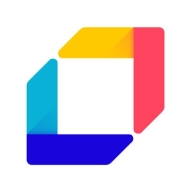

![Threat Stack Cloud Security Platform [EOL] Logo](https://images.peerspot.com/image/upload/c_scale,dpr_3.0,f_auto,q_100,w_64/o0no0it6ybl6satjcxomcblsgmd6.png)
Threat Stack Cloud Security Platform [EOL] and Aqua Cloud Security Platform compete in the cloud security solutions category. Aqua Cloud Security Platform holds an advantage due to its comprehensive feature set, although Threat Stack is noted for attractive pricing and support.
Features: Threat Stack Cloud Security Platform [EOL] provides robust intrusion detection, compliance reporting, and endpoint security monitoring. Aqua Cloud Security Platform offers advanced container security, seamless integration with Docker and AWS, and great runtime protection.
Room for Improvement: Threat Stack could enhance its deployment process, the complexity of initial setup, and feature integration with Kubernetes. Aqua Cloud Security Platform might improve its initial investment cost, feature parity for cloud functions, and scalability options in certain environments.
Ease of Deployment and Customer Service: Aqua Cloud Security Platform is known for a smoother deployment process and supportive service structure. Threat Stack, while offering reliable customer service, faces challenges with its deployment complexity.
Pricing and ROI: Threat Stack Cloud Security Platform [EOL] offers competitive pricing and solid ROI through cost-effective management. Aqua Cloud Security Platform, despite a higher initial investment, is perceived as providing superior ROI due to its advanced capabilities in cloud security.


| Company Size | Count |
|---|---|
| Small Business | 43 |
| Midsize Enterprise | 21 |
| Large Enterprise | 53 |
| Company Size | Count |
|---|---|
| Small Business | 6 |
| Midsize Enterprise | 1 |
| Large Enterprise | 9 |
| Company Size | Count |
|---|---|
| Small Business | 2 |
| Midsize Enterprise | 5 |
| Large Enterprise | 2 |
SentinelOne Singularity Cloud Security offers a streamlined approach to cloud security with intuitive operation and strong integration capabilities for heightened threat detection and remediation efficiency.
Singularity Cloud Security stands out for its real-time detection and response, effectively minimizing detection and remediation timelines. Its automated remediation integrates smoothly with third-party tools enhancing operational efficiency. The comprehensive console ensures visibility and support for forensic investigations. Seamless platform integration and robust support for innovation are notable advantages. Areas for development include improved search functionality, affordability, better firewall capabilities for remote users, stable agents, comprehensive reporting, and efficient third-party integrations. Clarity in the interface, responsive support, and real-time alerting need enhancement, with a call for more automation and customization. Better scalability and cost-effective integration without compromising capabilities are desired.
What are SentinelOne Singularity Cloud Security's standout features?SentinelOne Singularity Cloud Security is deployed in industries needing robust cloud security posture management, endpoint protection, and threat hunting. Utilized frequently across AWS and Azure, it assists in monitoring, threat detection, and maintaining compliance in diverse environments while providing real-time alerts and recommendations for proactive threat management.
Aqua Security stops cloud native attacks, preventing them before they happen and stopping them when they happen. Dedicated cloud native threat research and the most loved cloud native security open source community in the world put innovation at your fingertips so you can transform your business. Born cloud native, The Aqua Platform is the most integrated Cloud Native Application Protection Platform (CNAPP), securing from day one and protecting in real-time. Aqua has been stopping real cloud native attacks on hundreds of thousands of production nodes across the world since 2015.
Aqua Security Features
Aqua Security has many valuable key features. Some of the most useful ones include:
Aqua Security Benefits
There are many benefits to implementing Aqua Security. Some of the biggest advantages the solution offers include:
Reviews from Real Users
Lizeth Z., Cloud Security Specialist at Telstra, says, “Aqua Security is the most advanced solution in the market for container security. Aqua Security allows us to check for vulnerabilities in the CI/CD pipeline, so application teams can remediate issues before going into production. Aqua Security helps us to check the vulnerability of image assurance and check for malware.”
Threat Stack Cloud Security Platform [EOL] offers robust security features including endpoint monitoring, rule customization, and integration capabilities, with easy connectivity to cloud services like Docker and AWS.
Threat Stack Cloud Security Platform [EOL] provides tools for enhancing security visibility across cloud infrastructure. It supports AWS and Docker integration, facilitating efficient threat detection and management. Users appreciate its capability to configure customizable alerts and monitor endpoints, sessions, API interactions, and cloud services. However, there are areas needing improvement, such as better serverless environment support and reduced alert frequency. The platform services smaller organizations by compensating for limited security resources with its comprehensive monitoring and auditing tools.
What are the key features?In specific industries, Threat Stack Cloud Security Platform [EOL] is utilized for its strength in monitoring cloud infrastructure and preventing unauthorized access. Organizations in fields where cloud operations are critical use it for regular audits and monitoring. Its capabilities in threat management are leveraged to maintain secure operations and compliance, especially where there is no dedicated security team.
We monitor all Cloud Workload Protection Platforms (CWPP) reviews to prevent fraudulent reviews and keep review quality high. We do not post reviews by company employees or direct competitors. We validate each review for authenticity via cross-reference with LinkedIn, and personal follow-up with the reviewer when necessary.